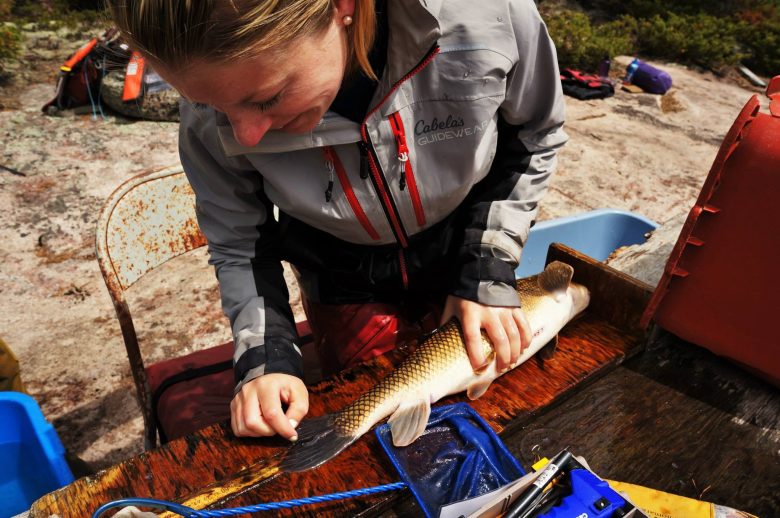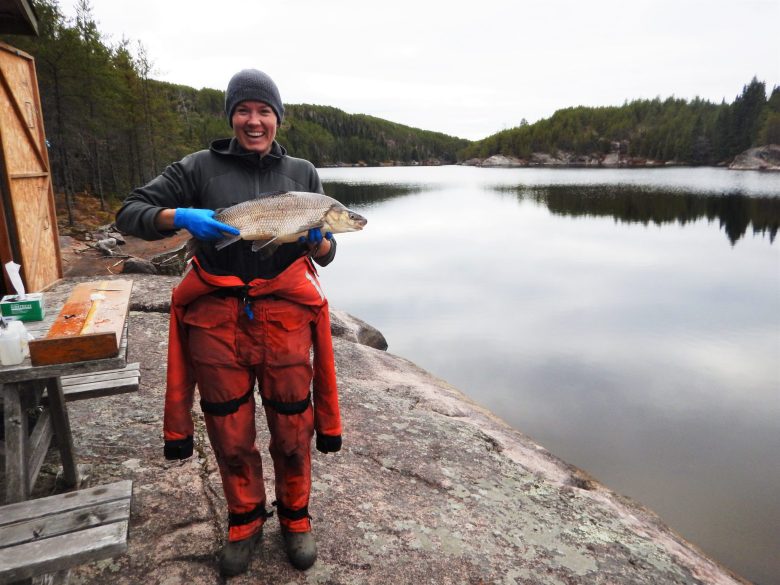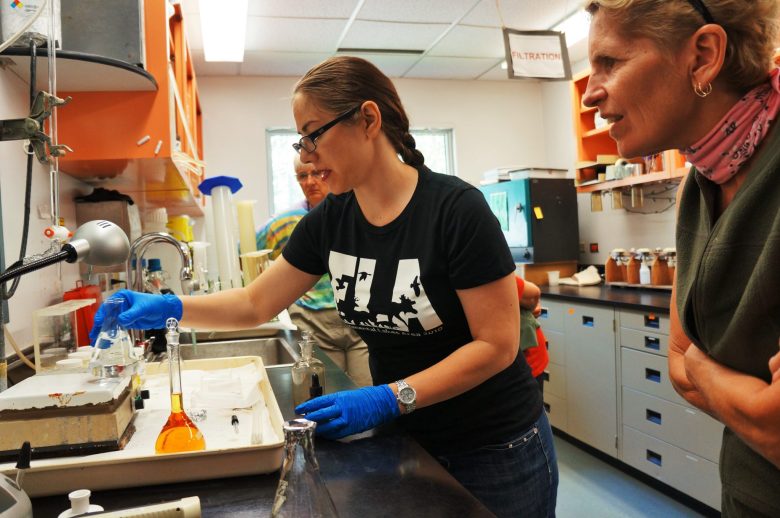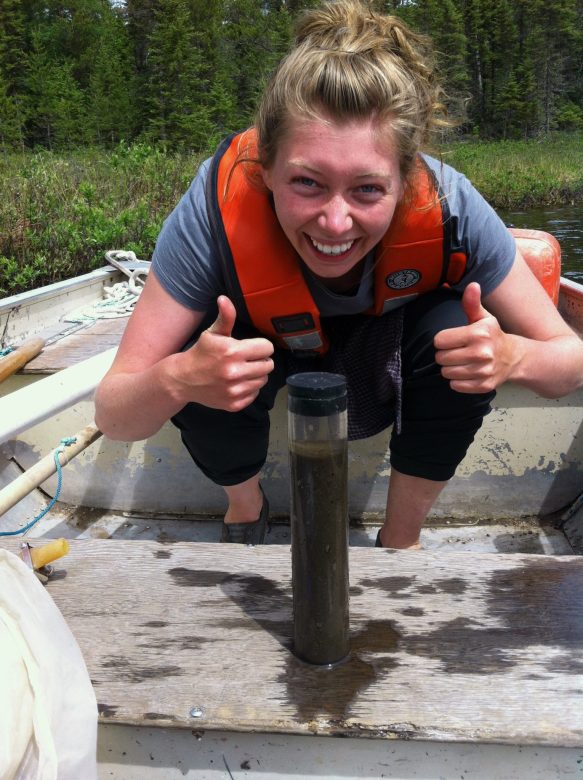News June 26, 2017
Celebrating Women in Limnology
By Sumeep Bath, Media and Communications Officer
Here at IISD Experimental Lakes Area, we are proud that so many talented female limnologists work at the site, either as part of our core team, or as visiting researchers and students.
We spoke to four of the women who work at IISD-ELA to ask them about their experiences working in limnology as a woman, and what advice they might have for other budding female scientists…
How did you first get involved in limnology?
Hi! I’m Chandra Rodgers. I am a Fisheries Research Biologist at the IISD-ELA field station near Kenora, Ontario, Canada. I received my undergraduate and MSc degrees in biology from the University of Western Ontario in London, Ontario. As a child, I fondly remember fishing with my dad off our cottage dock in the summers. Maybe this is where my love for playing with fish came from. I continued to fish recreationally throughout high school and university until finally, I realized I could make a career out of it! Science has become a very important part of who I am and how I define myself. I am constantly full of curiosity and wonder. Most of all, I love to communicate with others that feel as strongly and passionately about environmental science as I do.

Most of all, I love to communicate with others that feel as strongly and passionately about environmental science as I do.
Tell us more about the work and research you do at IISD-ELA.
I’m Lee Hrenchuk, a Biologist at IISD-ELA where Chandra and I lead the fish crew field program! At IISD-ELA we have the incredible opportunity to work with a diverse team of researchers (from hydrology and limnology to water chemistry to the food web) and conduct whole-ecosystem experiments on lakes. This means we study a lake for a few years (background data collection), then we manipulate that lake in some way (e.g., by adding a contaminant or altering the hydrology) and study the effects on the lake. We are able to determine real-world impacts of many types of human-induced stressors that it would be difficult or impossible to do in a laboratory setting. After the manipulation is complete (can be a few years or many years), we return the lake to its natural state and study the “recovery period”. Mine and Chandra’s research focuses on all things fish – from minnows to top predators! We monitor and assess the effects of a variety of environmental perturbations (including mercury deposition, nanosilver, endocrine disrupting chemicals, eutrophication, climate change) on fish populations, ecology and behaviour in the small, oligotrophic lakes in the boreal shield at IISD-ELA.

What is your advice for other women in limnology or for other women interested in getting into your field of study?
Hi. I’m Sonya Havens and I am a Research Chemist out at IISD-ELA. Growing up, I always thought I could become whatever I wanted, the hard part was figuring out what I wanted to become. I figured I could achieve anything I set my mind to by working hard and persevering. Reaching your career goals can be overwhelmingly exhausting. I think to be successful, especially in science, you have to withstand the temptation to give up and resolve to persevere. If you can do this, you can do anything.

Have you ever had to overcome any challenges as a woman in limnology?
I’ve had a positive experience as a woman in limnology so far but I think an ongoing challenge for me has been recognizing gender bias in science and not letting it deter me from reaching my career goals.
I’m Stephanie Graves, a PhD student in the Toxicology Program at the University of Saskatchewan conducting my research at IISD-ELA. I’ve had a positive experience as a woman in limnology so far but I think an ongoing challenge for me has been recognizing gender bias in science and not letting it deter me from reaching my career goals. For example, a male scientist once told me that it would be difficult for me, as a woman, to establish a career in academia because I’d be juggling it with trying to start a family! One thing that has helped me a lot is that I have several female role models in STEM to look up to. I’ve had the opportunity to work with some very successful female scientists and they’ve really shown me what’s possible if I keep working hard and don’t succumb to stereotypes.
